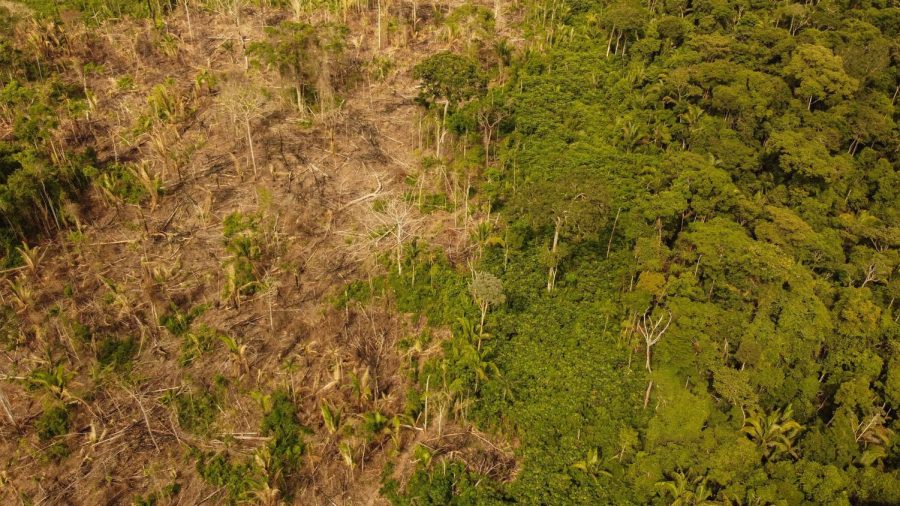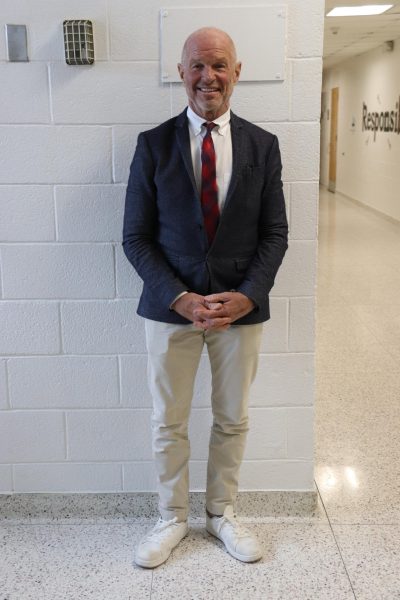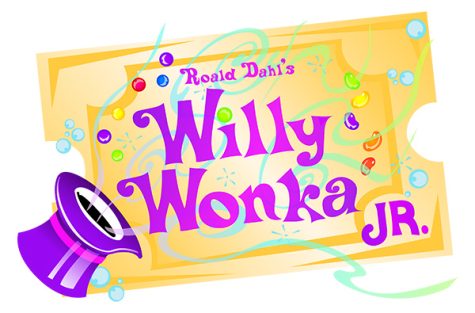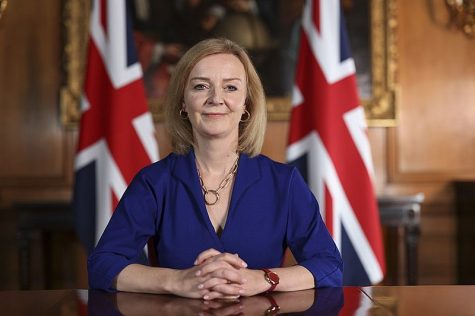Amazon Rainforest Deforestation and What it Means for the World
June 20, 2022
The Amazon Rainforest is the largest rainforest in the world that is over 2.5 million square miles in area, and spans across eight countries. It is almost impossible to believe that a region of such large size could be completely wiped out and dried into a savanna. However, that thought has become not so much of a crazy idea, but may become reality. In the Brazilian part of the Amazon Rainforest, twenty-four trees are cut down every second on average. That’s fifteen square miles of rainforest per day. Deforestation has been getting worse year after year.
The idea of the Amazon Rainforest being in threat is nothing new. Since industrialization around the world, more and more lumber is needed to build structures and to produce products. Because of this, logging companies began to pop up around the Amazon Rainforest to take advantage of its vastness.
In the early 2000s, scientists began studying the forest to see its condition. What they found was that over 75% of the Amazon Rainforest has losing resilience, meaning that it has a slowing rate of return to normal after disruptions like drought. That is alarming, as it shows that the rainforest may be starting to die at a rapid rate.
Sadly, the further we get into the future, instead of deforestation being fixed, it is continuously getting worse. Year after year, more and more trees are cut down at even faster rates. Under the current Brazilian government, deforestation has increased. The administration of President Jair Bolsonaro, elected in 2018, has caused deforestation to progress through the weakening of inspection bodies, lack of punishment for environmental crimes, and a reduction of immediate actions to combat and control of illegal activities in the region. According to a survey, more than half of deforestation in the last three years has taken place on public lands, the overwhelming majority in federally controlled areas. A large chunk of deforestation is concentrated around two national highways that cross the northern Mato Grosso and western Pará regions of Brazil. Of the affected areas, the “Non-Intended Public Forests” were the most affected with an 85% increase in deforestation annually. In the last year, this category of public forest was a third of all deforestation in the biome. In Indegenous Lands, deforestation increased by 153% annually, and in Conservation Areas, it increased by 64% annually.
As sections of rainforest get razed for agriculture and logging reasons, the edge of the forest is getting fried by the sun. As the damp rainforest begins to lose its humidity due to disturbances like these, it begins to kill plants and causes animals to flee. Then, those edges begin to turn into a dryer environment. As trees are removed, it also begins to kill the surrounding area. Even if trees are removed for just electrical lines, railway lines, roads, and other thinner areas of land, it will still cause the surrounding trees to begin to die too, basically creating a closing in wall of death for the Amazon.
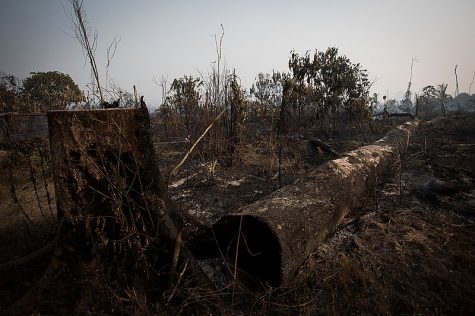
As the rainforest dies, it will not only affect Brazil, but also the rest of the world. The Amazon Rainforest is not only responsible for a large amount of oxygen production, but it also removes carbon dioxide from the air to be used for photosynthesis. As the rainforest dies, it puts the world’s atmosphere in jeopardy. While the Amazon Rainforest overall is still a carbon sink, this may not be for long. Especially in Brazil’s portion of the Amazon Rainforest, forest fires caused by the dead and dry edges of the rainforest have started to put off more and more carbon emissions. The recent fires in the Brazilian part of the Amazon, along with logging and other human activities, have increased the forest’s transformation to a carbon source from a carbon sink. The more humans continue to kill the Amazon, the worse our air quality and the hotter our planet will get.
The Amazon Rainforest also plays a huge role in the water cycle. In this cycle, the Amazon Rainforest absorbs water from the atmosphere for photosynthesis. Then, the forest also releases a bunch of water vapor into the atmosphere during photosynthesis. This, in turn, provides rain water for the rest of South America and also for the world. Without the Amazon Rainforest, the water cycle would no longer be able to efficiently cycle, as a huge component of it would be gone. This would create unstable and unique weather patterns.
The more the rainforest is cut down, the more climate change will accelerate, the crazier and more inconsistent our weather will be, and the worse the quality of the air we breathe will get. Animals will go extinct and people will lose their homes and lives, all because of the greediness and disregard of nature that is felt by many humans.
Now that we know all about what is happening to the Amazon Rainforest, and what will happen if or when it dies, what can we do to help? According to 7th Grade Science Teacher Mrs. Koransky, we have to educate ourselves. We have to educate ourselves on what companies to avoid and what companies to support. We have to educate ourselves on the alternatives to wood, like bamboo, that we can buy and use instead. We have to educate ourselves on products like palm oil that are contributing to deforestation. We have to recycle and be mindful of our paper usage. If you want us and our descendants years in the future to continue to live long and happy lives on this planet, we have to act now. We don’t have much longer to change.

